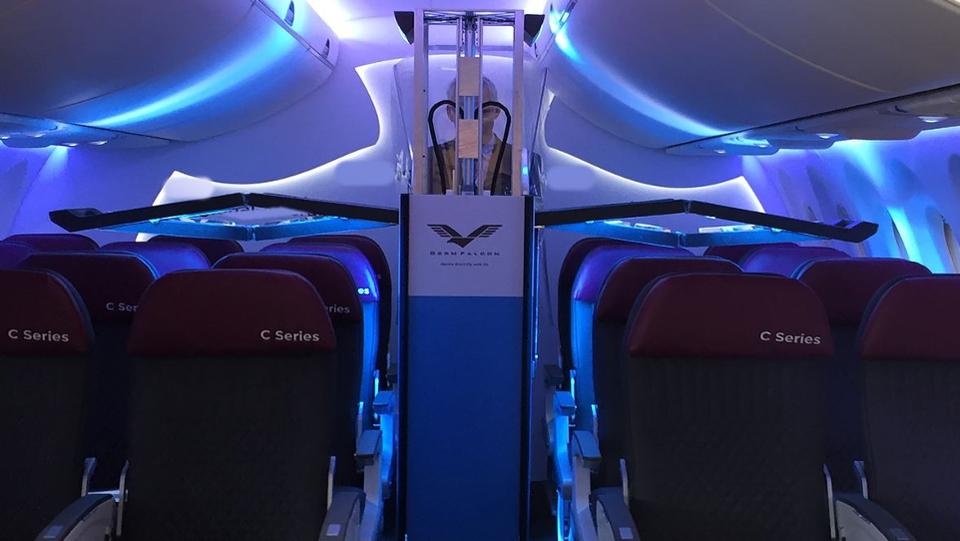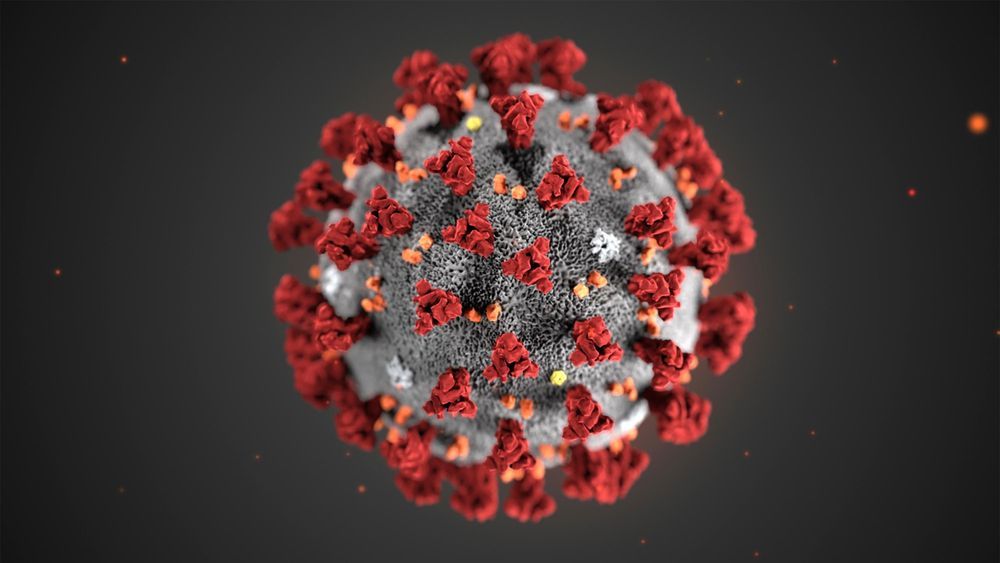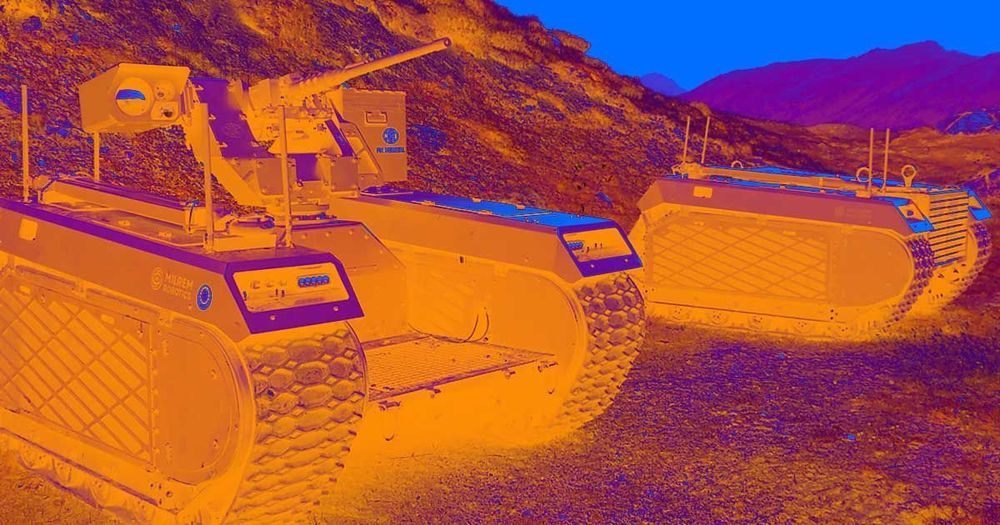Audi has unveiled the “AI: ME,” a Level 4 autonomous, all-electric concept car. Its high-tech features are contrasted with a nature-inspired design.


Do you think Xenobots is the early stage of nanobots, which could repair our body to achieve longevity escape velocity?
Scientists have created the world’s first living, self-healing robots using stem cells from frogs.
Named xenobots after the African clawed frog (Xenopus laevis) from which they take their stem cells, the machines are less than a millimeter (0.04 inches) wide — small enough to travel inside human bodies. They can walk and swim, survive for weeks without food, and work together in groups.
These are “entirely new life-forms,” said the University of Vermont, which conducted the research with Tufts University’s Allen Discovery Center.

The hidden secret of artificial intelligence is that much of it is actually powered by humans. Well, to be specific, the supervised learning algorithms that have gained much of the attention recently are dependent on humans to provide well-labeled training data that can be used to train machine learning algorithms. Since machines have to first be taught, they can’t teach themselves (yet), so it falls upon the capabilities of humans to do this training. This is the secret achilles heel of AI: the need for humans to teach machines the things that they are not yet able to do on their own.
Machine learning is what powers today’s AI systems. Organizations are implementing one or more of the seven patterns of AI, including computer vision, natural language processing, predictive analytics, autonomous systems, pattern and anomaly detection, goal-driven systems, and hyperpersonalization across a wide range of applications. However, in order for these systems to be able to create accurate generalizations, these machine learning systems must be trained on data. The more advanced forms of machine learning, especially deep learning neural networks, require significant volumes of data to be able to create models with desired levels of accuracy. It goes without saying then, that the machine learning data needs to be clean, accurate, complete, and well-labeled so the resulting machine learning models are accurate. Whereas it has always been the case that garbage in is garbage out in computing, it is especially the case with regards to machine learning data.
According to analyst firm Cognilytica, over 80% of AI project time is spent preparing and labeling data for use in machine learning projects:

When doctors in a Washington hospital sought to treat the first confirmed case of the Wuhan coronavirus in the United States on Wednesday, they tapped a device called Vici that allowed them to interact with their patient not in person, but through a screen.
The telehealth device, which looks like a tablet on wheels that doctors can use to talk to patients and perform basic diagnostic functions, like taking their temperature, is one of a handful of high-tech machines that doctors, airport workers, and hotel staff are using to help contain the outbreak that has been sweeping the world since it was discovered in Wuhan, China in late December.
“Caregivers provide care within the isolation unit, but technology is allowing us to reduce the number of up-close interactions,” says Dr. Amy Compton-Phillips, chief clinical officer at Providence Regional Medical Center in Everett, Washington, where the patient is being treated. Vici, made by Santa Barbara, California-based InTouch Health, resembles a tablet on wheels, and can protect caregivers from infection.

If you’re interested in mind uploading, then I have an excellent article to recommend. This wide-ranging article is focused on neuromorphic computing and has sections on memristors. Here is a key excerpt:
“…Perhaps the most exciting emerging AI hardware architectures are the analog crossbar approaches since they achieve parallelism, in-memory computing, and analog computing, as described previously. Among most of the AI hardware chips produced in roughly the last 15 years, an analog memristor crossbar-based chip is yet to hit the market, which we believe will be the next wave of technology to follow. Of course, incorporating all the primitives of neuromorphic computing will likely require hardware solutions even beyond analog memristor crossbars…”
Here’s a web link to the research paper:
Computers have undergone tremendous improvements in performance over the last 60 years, but those improvements have significantly slowed down over the last decade, owing to fundamental limits in the underlying computing primitives. However, the generation of data and demand for computing are increasing exponentially with time. Thus, there is a critical need to invent new computing primitives, both hardware and algorithms, to keep up with the computing demands. The brain is a natural computer that outperforms our best computers in solving certain problems, such as instantly identifying faces or understanding natural language. This realization has led to a flurry of research into neuromorphic or brain-inspired computing that has shown promise for enhanced computing capabilities. This review points to the important primitives of a brain-inspired computer that could drive another decade-long wave of computer engineering.


If you are interested in mind uploading, then I have a research paper for you to consider. One of the serious issues with mind uploading is the computer substrate. Simulating the brain will require a new and incredible computing capability. New techniques and new hardware are going to be required to make it practical. Of course, there is currently zero demand for mind uploading hardware, so the market is not going to provide this capability. However, there is incredible market demand for cutting edge hardware for machine learning and artificial intelligence. And it turns out that one potential technique for artificial intelligence simulates the way that the brain works: neuromorphic computing. And there is a relatively new type of electronic component that seems to mimic some of the functions of a brain’s neuron: the memristor. Memristors are relatively new, having only been fabricated for the first time by HP in 2008. So I am trying to keep up with the latest developments in memristive technology.
Here are some excerpts from the paper:
“…Artificial Neural Network (ANN) algorithms offer fast computations by mimicking the neuronal network of brains. A weight matrix is used in neural networks (NNs) for parallel processing that makes computing faster…The memristor has attracted much attention because of its potential to have linear multilevel conductance states for vector-matrix multiplication (output = weight × input), corresponding to parallel processing…”
Here is a web link to the research paper:
Neuromorphic computation is one of the axes of parallel distributed processing, and memristor-based synaptic weight is considered as a key component of this type of computation. However, the material properties of memristors, including material related physics, are not yet matured. In parallel with memristors, CMOS based Graphics Processing Unit, Field Programmable Gate Array, and Application Specific Integrated Circuit are also being developed as dedicated artificial intelligence (AI) chips for fast computation. Therefore, it is necessary to analyze the competitiveness of the memristor-based neuromorphic device in order to position the memristor in the appropriate position of the future AI ecosystem. In this article, the status of memristor-based neuromorphic computation was analyzed on the basis of papers and patents to identify the competitiveness of the memristor properties by reviewing industrial trends and academic pursuits. In addition, material issues and challenges are discussed for implementing the memristor-based neural processor.

A book is made of wood. But it is not a tree. The dead cells have been repurposed to serve another need.
Now a team of scientists has repurposed living cells—scraped from frog embryos—and assembled them into entirely new life-forms. These millimeter-wide “xenobots” can move toward a target, perhaps pick up a payload (like a medicine that needs to be carried to a specific place inside a patient)—and heal themselves after being cut.
These are novel living machines. They’re neither a traditional robot nor a known species of animal. It’s a new class of artifact: a living, programmable organism.
Credit: sam kriegman, UVM credit: douglas blackiston, tufts university
News Source: https://www.uvm.edu/uvmnews/news/team-builds-first-living-robots
Watch technology news at https://www.youtube.com/playlist?list=PLK2ccNIJVPpB_XqWWq_oaZGIDzmKiSkYc

The world’s first programming language based on classical Chinese is only about a month old, and volunteers have already written dozens of programs with it, such as one based on an ancient Chinese fortune-telling algorithm.
The new language’s developer, Lingdong Huang, previously designed an infinite computer-generated Chinese landscape painting. He also helped create the first and so far only AI-generated Chinese opera. He graduated with a degree in computer science and art from Carnegie Mellon University in December.
After coming up with the idea for the new language, wenyan-lang, roughly a year ago, Huang finished the core of the language during his last month at school. It includes a renderer that can display a program in a manner that resembles pages from ancient Chinese texts.